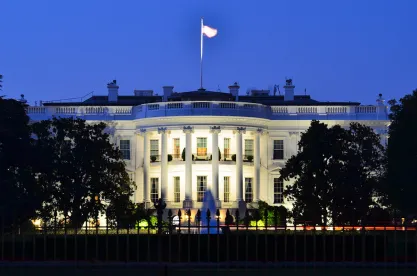In line with policy directives from the Biden administration, federal regulators have made it clear that fair and responsible lending is an enforcement priority—and that the directive extends to lenders making student loans (also referenced as education loans).
Education loans are extensions of credit made to students or parents to fund undergraduate, graduate, and other forms of postsecondary education. Federally-funded and private student loans may be offered by banks, non-profits, nonbanks, credit unions, state-affiliated organizations, and institutions of higher education, including both for-profit and non-profit schools. Lenders are expressly prohibited from discriminating in connection with student loan transactions under the Equal Credit Opportunity Act (ECOA), which prohibits discrimination in any aspect of any type of credit transaction.
Student lending highlights important national issues as outstanding balances and defaults have risen, and the current administration has shown an openness to considering even a cancellation of some of the debt. Given the new focus on student lending, attention to fair lending for education and student loans is a natural next step. In fact, regulators recently signaled that fair lending in the student loan space could be a focal point for examination. In March 2022, the Federal Deposit Insurance Corporation (FDIC) revealed in its Consumer Compliance Supervisory Highlights report that it referred a fair lending matter to the U.S. Department of Justice involving a pattern or practice of discrimination in underwriting student loans. The institution in question had a policy of using the Cohort Default Rate (CDR)—a metric published by the U.S. Department of Education that shows the percentage of a school’s borrowers who default on certain loans—as an eligibility threshold to determine which students could apply for private student loan debt consolidation and refinance loans. The FDIC determined that use of the CDR resulted in the “disproportionate exclusion” of students who attended Historically Black Colleges and Universities (HBCUs) from applying for credit. Because graduates of HBCUs were disproportionately black, the FDIC concluded that the institution’s policy of using the CDR had a disproportionate impact on the basis of race.
The FDIC acknowledged that “use of the CDR to determine school-specific eligibility requirements constituted a neutral policy,” meaning that the policy was applied equally to all students regardless of race or ethnicity. The FDIC, however, identified a pattern of discrimination through the lens of a disparate impact theory of liability—a theory that is used to show discrimination when a lender applies a facially neutral policy equally to all credit applicants, but that policy causes a disproportionate adverse effect on certain persons on a prohibited basis. An issue thus arises as to whether there is a sufficient nonracial business justification for use of the CDR in evaluating eligibility for student loans. Race, of course, cannot be used as a qualifying factor in making credit decisions, even in circumstances in which it might be predictive of performance.
Financial institutions involved in student loans should take notice that fair lending is an area of potential new scrutiny and risk. Now is the time for compliance and legal departments to review, and update as needed, written policies and business practices, to perform an appropriate fair lending risk assessment, and to ensure that adequate internal controls are in place to mitigate those risks.




 />i
/>i

